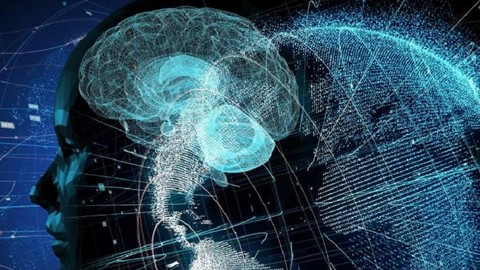
The Data Science Course 2020 Q2 Updated: Part 1
-
You will gain a firm foothold of the fundamentals of Data Science. The course provides the entire toolbox you need to become a data scientist. -
You will understand the mathematics and statistics behind Machine Learning -
You will understanding the Octagonal Technical Facets of Data Science -
You will learn how to pre-process data -
You will understand the corporate roles that exist in Data Science -
You will understand the important terminologies and statistical methods in data science -
You will understand Discrete and Continuous random variables -
You will learn the basics of descriptive statistics using a Metric example -
You will learn what percentile is with the help of examples
- No prior experience is required. We will start from the very basics
“Data Scientist is a person who is better at statistics than any programmer and better at programming than any statistician.” – Josh Wills
The Data Science Course 2020 Q2 Updated: Part 1
In this course we lay your foundation on Data Science. More often than not participants rush into learning data science without knowing what exactly they are getting into: this course will give you insights and clarity on what data science is all about.
Statistics, Math, Linear Algebra
If we talk in general about Data Science, then for a serious understanding and work we need a fundamental course in probability theory (and therefore, mathematical analysis as a necessary tool in probability theory), linear algebra and, of course, mathematical statistics. Fundamental mathematical knowledge is important in order to be able to analyze the results of applying data processing algorithms. There are examples of relatively strong engineers in machine learning without such a background, but this is rather the exception.
Data Mining and Data Visualization
Data Mining is an important analytic process designed to explore data. It is the process of analyzing hidden patterns of data according to different perspectives for categorization into useful information, which is collected and assembled in common areas, such as data warehouses, for efficient analysis, data mining algorithms, facilitating business decision making and other information requirements to ultimately cut costs and increase revenue.
Machine Learning
Machine learning allows you to train computers to act independently so that we do not have to write detailed instructions for performing certain tasks. For this reason, machine learning is of great value for almost any area, but first of all, of course, it will work well where there is Data Science.
Programming (Python & R)
We recommend all our students to learn both the programming languages and use them where appropriate since many Data Science teams today are bilingual, leveraging both R and Python in their work.
Through our Four-part series we will take you step by step, this is our first part which will lay your foundation. We will deal with the below sections in this Part 1:
- Data Science Roles
- Data Science Insights
- Terminologies and Statistical Methods in Data Science
- Discrete and Continuous random variables
- Basics of descriptive statistics
- Understanding Percentile
- The course is also ideal for beginners, as it starts from the fundamentals and gradually builds up your skills
- You should take this course if you want to become a Data Scientist or if you want to learn about the field






